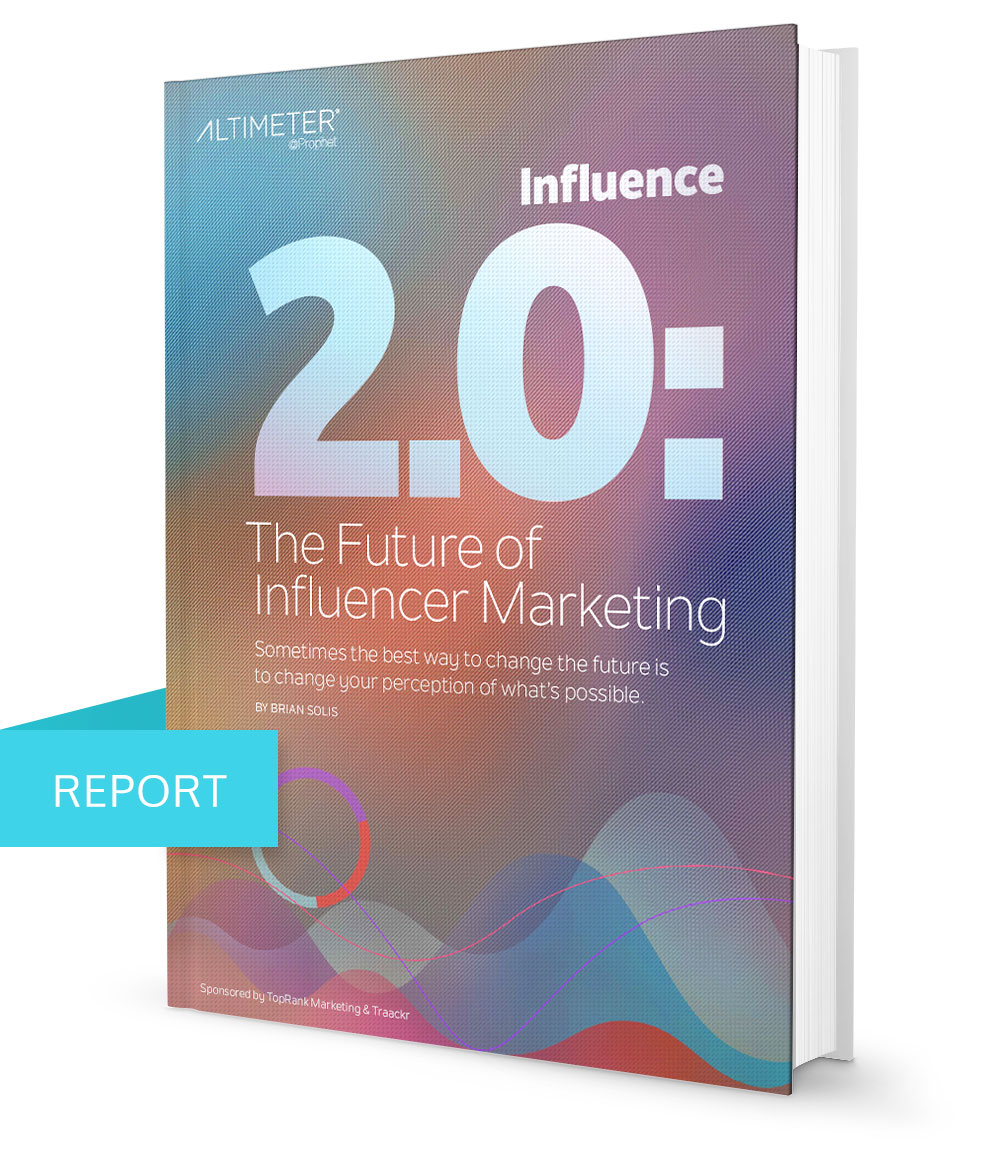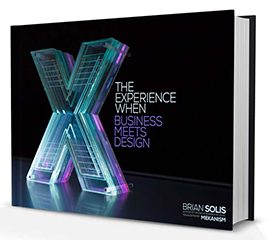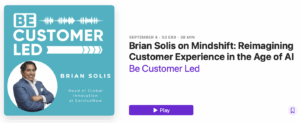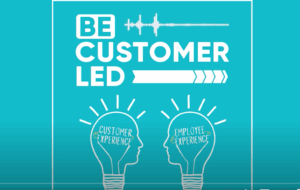Before social media, before modern digital marketing and before DCX and digital transformation, I spent much of the late 90s and early 2000s studying and experimenting with online influence. In February of 1999, I opened a lab to test and learn and in the process, was one of the many contributors to shape the future of digital marketing and customer engagement. Shortly after joining Altimeter Group in 2012, I shared all of the research I had collected and more and published the findings in a comprehensive report, “The Rise of Digital Influence.” In fact, that report is still considered the standard in understanding how people influence the impressions and actions of others online.
Fast forward five years later, and I have revisited the subject with the intent of pushing forward an entire industry that in many ways has gone astray. In a special research project with Traackr and my dear friend Lee Odden of TopRank, we recently released a new study and paper on the future of influence and influencer relations that’s free to download, “Influence 2.0: The Future of Influencer Marketing.”
As part of the launch, I was interviewed by Paul Armstrong for Forbes. The interview yielded more content than he could use for his article, but it’s too important to leave on the cutting room floor.
I’m sharing it here in all of it’s glory with the hope that it helps you.
Influence 2.0 – The Future of Online Influence
Influencer relations…is it just the new term for blogger relations? How does Influence 2.0 differ? (I want hardcore points here…because I see little to say we’re in a brand new world…just new channels/tools)
The truth is that any time this topic comes up it is aiming to put a pretty bow on a old way of thinking about engagement. the inference with influence 2.0 is to make a formal push into a new era of engagement that ties more specifically to customer experience or the experience the experience of anyone who is looking for useful information or relationships to make decisions.another main difference is that previously marketers would simply do what they have always done and that is to find anyone with potential influence e.g. whether its analysts, reporters or bloggers to pitch their messages and news in the hopes that they would simply talk about their company.
The reality is that this is a “pay and spray” approach that has not only been ineffective but has built poor relations between anyone of influence and authority and brands. its has become a stereotype or example of exactly how not to build relationships and more importantly this approach built zero bridges between companies and customers and influencers in a way that created a flourishing and productive eco system for any company. The last point that is very important is that most marketers have zero understanding of the customer journey and who their customers are in terms of groups and personas and how they make decisions and who influencers these decisions every step of the way and who they in turn turn influence as a result.this is the foundation for Influence 2.0 in that marketing now becomes part of customer experience to help connect the dots between influencers, desired customers and the information and relationship they need to move forward in each moment of truth. This builds relationships based on usefulness, productivity and breeds reciprocity along the way.
About 1/3 of marketers have a very low opinion of influencer relations – what’s specifically causing this and why?
To be honest I’m surprised its not higher than that. The truth is that marketers don’t know what they don’t know and therefore they cannot see the value of influencer relationships if they don’t understand what influence really means – not just to marketers but more importantly the impact and the relationships people of influence have with their community. When we traditionally think of influencer marketing we think about old methodologies and perspectives and applying those to new tech platforms. But here we are not really doing anything new. Therefore we cannot expect anything new.The purpose of this research and report and the entire concept of influence 2.0 is to bring progressive marketers forward and to also introduce a powerful approach to those working in customer experience to set forward programs that take people into account who form the communities where brands need engagement and visibility where people are looking for insight and interaction and to build a customer journey that is productive for all. You cannot value anything that you do not know what you are trying to accomplish and then how to measure success in ways that are beneficial. Influencer marketing has not been strategic up until now. Its all been about numbers of followers, views and all kinds of metrics that carry little value and its time for that to change.
Why are budgets so low for this? Is it a sign of maturity or the lack of ROI measureability around activities?
Yes across the board. Influencer marketing is immature in that it hasn’t tried to expand its horizons beyond traditional marketing tactics and measurement and this is because it has lacked vision and ambition from marketers everywhere. It is not their fault however. It is simply that a lot of marketing is still routed in outdated principles and it is difficult to break those norms when that is what marketers are paid to do today. The budgets are a reflection of the values that they carry to the business and until marketers think like business managers or owners marketing will always be just that….marketing.But what we are presenting today os a framework from which to reimagine marketing within the digital economy and we are recruiting brave marketers to push forward and to set the stage for the future. When you tie marketing to customer experience you by default start to make marketing a business tool. And that changes everything.
The report leaves me feeling that brands and companies still want to pay to shout rather than converse? Would you agree that companies would be better served paying for technology and teams that help them communicate with more individuals?
‘Paying to shout’ is a problem that has long plagued marketing going back to the beginning of marketing itself. In fact some could argue that it is engrained in our very DNA that this is the basis for all marketing. The louder you shout the more effective it is. And with traditional media over the past generation whether that is tv, print or radio and now online the more you pay and the more you shout the more its supposed to work. The challenge is and moreso the reality customers tune all of that out, except on rare occasions. People are now connected and informed and empowered and everyone in their own way, shape or form has become entitled and also demanding. Shouting does not work. Engagement and basic relationship principles and understanding the customer journey will change the dynamics forever, at least for those that want to make marketing matter again.
“Return on Relationship” seems incredibly…gross when dealing with people and influence. How can brands get this outcome but actually appear genuine?
One of the first things that anybody in CX worth their salary will do is to understand the customer journey,not just as not exists but also how it applies to an evolving set of customer behaviours. In this work you uncover missing touch points that span all channels and in these ‘moments of truth’ as they are called you also learn what people are asking, why people are doing what they are doing, where they are going, who they follow as a result and how, when, where and why they make decisions. This unbelievably overlooked aspect of engagement is fiercely tied to what people need to hear to move forward, period. Most of the time they are simply looking for insight and information to validate or introduce options that are relatable to them. In these moments influence happens. Every day. We just miss it. Our job is to connect those dots and to become part of a community that is always on.
So measuring “Return on relationships” is a novel idea but when you connect the dots on customer expectations, resource management, influencers that impact decisions and content that moves people in desired directions you can and should now build metrics that drive outcomes and change behaviours. period. We are just getting started with what metrics can do but the truth is that Influence 2.0 pushes marketers to think more tangibly because today we can now track journeys in ways that has never before been possible, we just need to think differently and that starts with scrapping the entire marketing check list as it exists today.
I get that people want things to change from one state to another but at the end of the day aren’t we just still giving access or money to the Influencers? Aren’t people just trying to make brands pay to just talk to more people on different platforms?
This will never be Influence 2.0. This will always be influencer marketing. The point of this entire paper and this entire conversation is that we are inviting ‘influencer marketers’ to add value to their work and to their companies by thinking more holistically and approaching engagement and relationships with influencers and customers and any stakeholder for that matter based on mutual value, respect and a hope to continue engagement over time. This is not about paying people with followers even though that will continue as a practice. This is a call for a new era of marketing beyond influence to improve the journeys for customers and stakeholders everywhere. This becomes more about experience design and experience management than paying of people to talk about companies. That’s a bit old don’t you think?
The round, cross-functional model seems to suggest silos…is this really how influence is? What are the negatives of such a model…?
All businesses are compromised of silos it is not just related to influence. Influence as we propose is one of the catalysts for connecting the dots internally so that we can connect the dots externally. A customer or stakeholder or whoever we are trying to reach does not care about how a business operates. They simply think about what they want to do and thats all that drives them. So the more that companies operate in silos, the more information and touch points and journeys are disconnected and they are disconnected today. And every day this becomes a bigger and bigger problem for brands. So cross functional engagement is that future of a customer experience work and since influencers are tied directly to decisions making influencers become one the ways to reimagine how internal stakeholders can collaborate to remove friction from and optimise the customer journey for connected customers
.The report doesn’t talk much about working with Influencers, their motivations and expectations. Why is this and how do you think these fit in with your findings? They would appear to be at odds with some of the insights/findings…
This is not a ‘How to’ manual. This is a call for a new mindset and approach to customer experience where influence become the driving force for change. You can expect that this will be followed up with a more practical guide on how to bring Influence 2.0 to life as well as concrete examples that show how company and agencies are doing this and what they are learning along the way. The only thing at odds here is whether or not practitioners and strategists are wiling to let go of old school influencer marketing tactics and measurements based on the numbers that they seek from their peers to break new ground so that this entire concept which is not a theory but instead a proven set of principles that are already working in customer experience work today. When you assemble all of these disparate things and put them together in a usable framework that shows not only how to think differently but how to approach it in a more holistic cross-functional way, you change the course for how all of this unfolds and as such when the report is run again next year you will see the numbers move.
Please read X, The Experience When Business Meets Design or visit my previous publications
Connect with Brian!
Twitter: @briansolis
Facebook: TheBrianSolis
LinkedIn: BrianSolis
Youtube: BrianSolisTV
Snapchat: BrianSolis
Invite him to speak at your next event or meeting.







3 COMMENTS ON THIS POST To “What is Influence 2.0 and why is it important in the future of CX?”